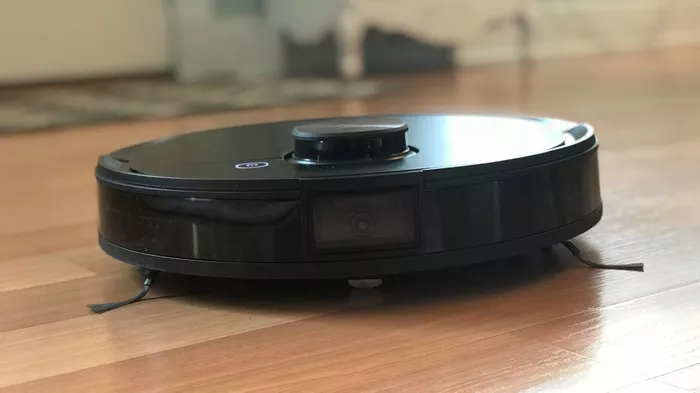Vacuum cleaners have become an indispensable tool in modern households, simplifying the task of cleaning floors, carpets, and upholstery. At the heart of these cleaning machines lies a complex system of components working together to create suction and effectively remove dirt and debris from various surfaces. In this article, we will delve into the inner workings of vacuum cleaner motors, exploring how vacuum motors work, components, processes, and maintenance tips to meet user needs effectively.
Basic Principle of Operation
The fundamental mechanism behind a vacuum cleaner’s functionality is akin to drinking a soda through a straw. When you suck on a straw, you create a pressure difference between the inside and outside of the straw, causing liquid to move from the glass into your mouth. Similarly, a vacuum cleaner utilizes suction to draw in air along with dirt and debris from the surface being cleaned. This suction is generated by an electric motor-driven fan within the vacuum cleaner.
Components of a Vacuum Cleaner Motor
A typical vacuum cleaner motor comprises several key components, each playing a vital role in its operation. The primary components include the electric motor, fan, intake and exhaust ports, and the vacuum cleaner bag or compartment. The electric motor powers the fan, which creates airflow by spinning rapidly. As air is drawn in through the intake port, it passes through the fan blades and is expelled through the exhaust port. The porous bag or compartment serves to trap dirt and debris, preventing them from re-entering the surrounding environment.
Process of Creating Suction
When the vacuum cleaner is turned on, electricity powers the motor, causing the fan to spin. As the fan blades rotate, they create a low-pressure zone behind them, similar to the effect of a fast-moving car pulling air along its wake. This pressure difference between the inside and outside of the vacuum cleaner chamber creates suction, pulling in air along with any loose particles present on the surface being cleaned.
Airflow and Pressure Difference
The movement of the fan blades not only generates airflow but also affects air pressure and density within the vacuum cleaner. As the fan spins, it increases the velocity of air molecules, causing them to spread out and decrease in density. This decrease in density creates a partial vacuum inside the cleaner, drawing in surrounding air and any debris in its path. The rapid movement of air molecules results in the vacuum effect, allowing the cleaner to effectively pick up dirt and dust from surfaces.
Dirt and Debris Collection
As the moving stream of air enters the vacuum cleaner, it carries along dirt and debris from the surface being cleaned. These particles are then trapped by the vacuum cleaner’s filtration system, which may consist of a porous bag or a series of filters designed to capture different sizes of particles. The captured dirt and debris are retained within the vacuum cleaner until the bag or compartment is emptied or replaced, ensuring a thorough cleaning process.
Types of Vacuum Cleaners
There are various types of vacuum cleaners available on the market, each designed to suit different cleaning needs and preferences. Upright vacuum cleaners are popular for their ease of use and maneuverability, featuring a motorized brush head for efficient carpet cleaning. Canister vacuum cleaners offer versatility, with a separate motor and canister connected by a flexible hose, allowing for easier access to tight spaces. Robotic vacuum cleaners have gained popularity for their autonomous operation, navigating through rooms and cleaning floors without human intervention. Wet/dry vacuums are designed to handle both wet and dry messes, featuring a durable motor and specialized filtration system.
Maintenance Tips
To ensure optimal performance and longevity of the vacuum cleaner motor, regular maintenance is essential. This includes emptying or replacing the vacuum cleaner bag or compartment as needed, cleaning or replacing filters to maintain proper airflow, and inspecting the motor and fan for any signs of wear or damage. Additionally, it is recommended to check and clean the intake and exhaust ports to prevent blockages that could hinder airflow. Following these maintenance tips will help users maximize the effectiveness of their vacuum cleaner and prolong its lifespan.
Technological Advancements
In recent years, there have been significant advancements in vacuum cleaner motor design, aimed at enhancing performance and convenience for users. One notable innovation is cyclonic action, which uses centrifugal force to separate dirt and debris from the airflow before reaching the filtration system, reducing clogging and maintaining suction power. Another innovation is bagless technology, which eliminates the need for disposable vacuum cleaner bags, instead relying on a dustbin that can be emptied and reused, reducing waste and operating costs.
Conclusion
In conclusion, vacuum cleaner motors play a crucial role in the functionality and effectiveness of these indispensable cleaning appliances. By understanding the basic principles of operation, components, processes, and maintenance tips outlined in this article, users can make informed decisions when selecting and caring for their vacuum cleaners, ensuring optimal performance and cleanliness in their homes.

